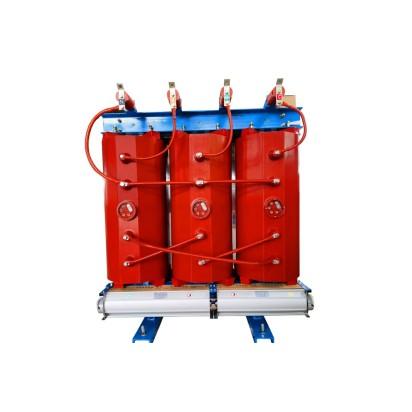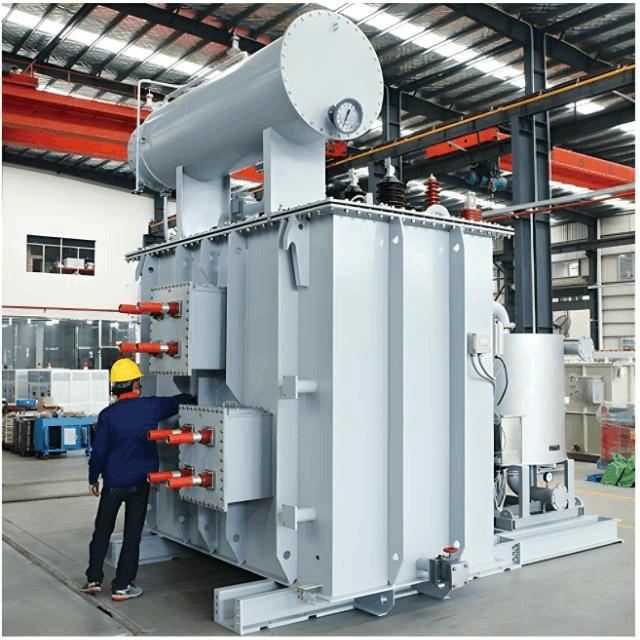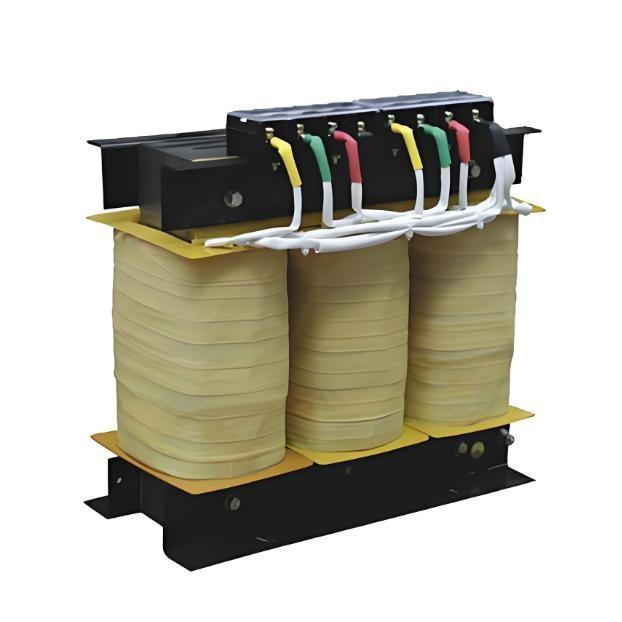Insulasyon sa Oil-Immersed Transformers
Sa mga kasamtangan nga oil-immersed transformers, ang insulasyon sa high-voltage windings nagsunod sa isang labing ginagamit nga paraan. Kasagaran, ang wire giputli og enamel, ug ang kraft paper gipasok tali sa bawg layer sa winding. Kini nga kombinasyon naghatag og reliable nga electrical insulasyon ug mechanical protection alang sa high-voltage windings, protektado kini kontra sa electrical breakdown ug physical damage.
Alang sa low-voltage windings, ang lain nga insulasyon strategy ang gigamit. Hini, ang strip conductors mahimo nga wala mog put-on, ug ang paper insulation gipasok tali sa layers. Kini nga metodo nagbutang og balanse tali sa cost-effectiveness ug ang kinahanglan nga insulasyon requirements alang sa low-voltage applications.
Gayondili, ang landscape sa insulasyon materials alang sa strap conductors sa low-voltage windings nag-evolve. Ang tradisyonal nga praktika sa pag-wrap sa strap conductors ngadto sa paper gradual na gitapos. Ang synthetic polymer coatings ug wraps gihimo sa synthetic cloth nag-emerge isip preferred alternatives. Kini nga modern nga materials naghatag og enhanced durability, mas maayo nga electrical insulasyon properties, ug improved resistance kontra sa environmental factors konpare sa tradisyonal nga paper insulation.
Ang pagsama sa aluminum wire, strap, ug strip conductors, sama sa enamel coatings, mipresentar og unique challenges sa distribution transformer manufacturers. Ang aluminum adunay distinctive property: kon exposed sa hangin, spontaneous niya mag-form og insulating oxide layer sa iyang surface. Kini nga self-formed oxide coating mahimo nga mopigla sa electrical conductivity. Taliwala, kon magkamo ug electrical connections gamit ang aluminum conductors, ang manufacturers kinahanglan mohimo og effective methods aron mapatyon kini nga oxide layer o maprevent ang iyang formation sa connection points. Kini nagkinahanglan og careful material selection, precise manufacturing processes, ug strict quality control measures aron masiguro ang reliable operation sa distribution transformers uban sa aluminum-based components.

Challenges and Solutions with Aluminum Conductors in Transformers, and Insulation in Dry-Type Transformers
Mga Hamubo ug Pag-handle sa Aluminum Conductors sa Oil-Immersed Transformers
Gisugdan pa, ang electrical-conductor-grade aluminum adunay notable nga soft texture. Kon mag-apil ang mechanical clamping, dako kaayo ang vulnerability niini sa issues sama sa cold flow ug differential expansion. Ang cold flow nagrefer sa slow deformation sa soft aluminum sa ilalum sa mechanical stress over time, samantalang ang differential expansion mao ang pag-expand o contract sa aluminum sa lain rate kay sa uban pang components sa assembly, mahimo nga madungog ang loose connections o mechanical failures.
Arong matubag ang connectivity needs sa aluminum wires, daghan nga specialized splicing methods ang gidevelop. Ang soldering mahimong gamiton, bisan molabaw kini og specific soldering techniques ug fluxes aron masiguro ang good bond. Ang usa ka common approach mao ang crimping, nga involbar sa paggamit og special crimps. Kini nga mga crimps gi-design aron makapenetrar sa both nga enamel coating sa wire ug naturally formed oxide layer sa aluminum surface. Sa pagbuhat niini, sila mag-establish og reliable nga electrical connection. Sa dihang sila nagseal off sa contact areas gikan sa oxygen, sila nagprevent sa further oxidation ug ensuring ang long-term integrity sa connection.
Alang sa aluminum strap o strip conductors, ang TIG (tungsten inert gas) welding naghatag og effective nga joining solution. Kini nga welding process naggamit og non-consumable tungsten electrode ug inert gas shield aron makahimo og high-quality, strong bond tali sa aluminum components. Giyanha, ang aluminum strips mahimo usab nga gijoin sa uban pang copper o aluminum connectors pinaagi sa cold welding o crimping techniques. Ang cold welding, partikular, nagcreate og solid-state bond walay need sa pag-melt sa materials, nga beneficial sa maintaining sa mechanical ug electrical properties sa conductors. Kahit sa pagbuhat og bolted connections sa soft aluminum, kon lamang ang joint area meticulous nga gicleaned aron matangtang ang tanang oxide o contaminants, makamao ang secure ug electrically conductive connection.
Insulation Materials in Dry-Type Transformers
Sa realm sa dry-type transformers, ang standard practice mao ang pag-apply og protective seal o coating sa windings pinaagi sa resin o varnish. Kini nagserve isip safeguard kontra sa daghang adverse environmental factors, sama sa moisture, dust, ug corrosive gases, tanan nga mahimo mogradual degrade sa insulasyon properties sa transformer windings ug kompromiso sa overall performance ug lifespan sa transformer.
Ang insulating media nga gigamit alang sa primary ug secondary windings sa dry-type transformers mahimong iklassify ha following distinct categories:
Cast Coil: Ha kini nga tipo, ang winding embedded sa cast resin, nga naghatag og robust ug durable insulation structure. Ang cast resin dili lang encapsulates ang conductors apan usab naghatag og excellent mechanical strength ug electrical insulation, making it suitable for applications where high reliability and protection are required.
Vacuum-Pressure Encapsulated: Kini nga metodo involbar sa encapsulating sa windings under vacuum-pressure conditions. Sa pag-remove sa air ug uban pang contaminants gikan sa insulation process, kini nagensure og mas uniform ug void-free insulation layer, enhancing the electrical and thermal performance of the transformer.
Vacuum-Pressure Impregnated: Ha kini, ang windings immersed sa insulating resin under vacuum-pressure. Kini nga proseso nagallow sa resin nga mopenetrate deeply sa winding structure, filling all the gaps and pores. As a result, it provides enhanced insulation and heat-dissipation capabilities, contributing to the efficient operation of the transformer.
Coated: Simple coating techniques involbar sa pag-apply og layer sa insulating material, sama sa varnish o specialized coating compound, directly onto the windings. Kini nga tipo sa insulation relatively straightforward ug cost-effective, suitable for applications where less stringent insulation requirements are needed.

Cast Coil
Ha cast coil insulation method, ang winding unang reinforced as needed o positioned within a mold. Then, it is cast in resin under vacuum-pressure conditions. Kini nga proseso naghatag og daghang significant advantages. Since the winding fully encased in solid insulation, effectively reduces sound levels during operation. Additionally, the vacuum-pressure casting process fills the winding with resin, completely eliminating any voids. These voids, if present, could lead to corona discharge, which can degrade the insulation and cause electrical problems over time. With its solid insulation system, the cast coil winding boasts exceptional mechanical strength, enabling it to withstand mechanical stresses. It also has remarkable short-circuit strength, ensuring reliable performance during electrical faults. Moreover, this type of winding is highly resistant to moisture and contaminants, safeguarding the transformer's internal components and extending its lifespan.
Vacuum-Pressure Encapsulated
Ha vacuum-pressure encapsulated insulation, ang winding embedded in resin under vacuum-pressure. Similar to the cast coil process, encapsulating the winding with resin in this way effectively removes any voids that might otherwise give rise to corona. As a result, the winding benefits from excellent mechanical strength, allowing it to endure mechanical shocks and vibrations. It also exhibits high short-circuit strength, ensuring stable operation during abnormal electrical conditions. This insulation method provides robust protection against moisture ingress and the intrusion of contaminants, maintaining the integrity of the winding and the overall performance of the transformer.
Vacuum-Pressure Impregnated
Ha vacuum-pressure impregnated insulation technique, ang winding permeated with varnish under vacuum-pressure. The impregnation process coats the winding thoroughly, creating a protective layer that shields it from moisture and contaminants. This helps to preserve the electrical and mechanical properties of the winding, ensuring reliable operation of the transformer in various environmental conditions. Although the level of protection might be relatively less comprehensive compared to some other methods, it still offers sufficient safeguarding for many applications.
Coated
The coated insulation approach involves dipping the winding in varnish or resin. A coated winding provides a basic level of protection against moisture and contaminants, making it suitable for use in moderate environments where the risk of exposure to harsh elements is relatively low. While it may not offer the same level of protection as more elaborate insulation methods, it is a cost-effective and straightforward solution for applications with less demanding insulation requirements.























